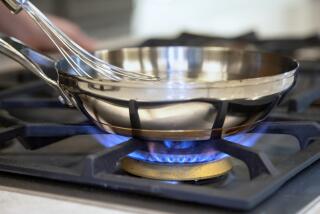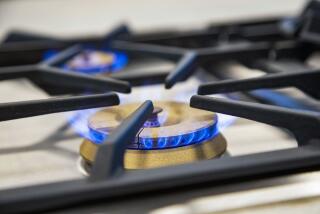Transforming Your Fireplace Into a Money Saver
Question: I know most fireplaces waste energy, but we love to sit in front of a raging fire. Are there any simple, low-cost things we can do to make it produce heat and to reduce the smoky smell?
Answer: People seldom realize the typical wood-burning fireplace sucks more heat out of a house than it produces. This makes the furnace run longer and drives up utility bills. Even though you feel toasty warm directly in front of the flames, the rest of the house gets very chilly.
There are several simple things you can do to make your fireplace more efficient and change it into an energy producer and money saver. Many of the same improvements also help reduce smoky conditions.
The two key improvements are reducing the amount of already-heated room air lost up the chimney and directing more heat from the fire into the room. By running your furnace blower on continuous air circulation, the heated air in the fireplace room will be distributed throughout your house.
The most heated room air is lost up chimneys when there is no fire burning because of a nonexistent or poor sealing chimney damper. To seal the chimney and provide insulation, I use an inflatable chimney pillow in my fireplace. It is clear plastic and you blow it up like a mini-air mattress.
Another option to block room air lost is a tight-sealing damper assembly mounted on top of the chimney with silicon caulking. Long narrow cables hang down in the chimney to easily open and close the damper. Chimney exhaust fans also seal well and can eliminate a smoky fireplace condition.
Tight-fitting glass fireplace doors with adjustable air openings help when the fire is burning. Some doors use magnets, and others use cams to keep them tightly closed. High-temperature silicon gaskets provide an excellent seal. Polished nickel, copper and pewter finishes are very attractive.
Install a heat circulating grate in the fireplace. The grate is made of steel pipes with a built-in fan that draws cool room air in one side and blows heated air out the other. The base is only 1.5 inches high so it fits under the glass doors. The heat output is as high as 40,000 BTUs per hour.
Models with a built-in thermostat and a variable-speed blower provide the most control over the heat output and the sound level. The thermostat turns the blower on automatically at 110 degrees and off at 90 degrees.
A heavy cast iron plate (fire-back), placed in the back of the fireplace, gets very hot. This helps radiate more of the fire’s heat out into the room before it is lost up the chimney.
For Energy Efficiency, Pick Light-Colored Shingles
Q: I have to install a new roof, soon, and I was wondering if the color makes any difference. Also, is there a type of paint that can change the color of a roof without replacing it?
A: The color of the shingles does make a difference in the amount of heat gain during the summer. During the winter, the impact of color is less. Very light-colored shingles are the best for energy efficiency.
There are several types of paint that are specifically made for roofs. Check your paint store. Ceramic-filled roof paint is probably the most effective at rejecting the sun’s intense heat during the summer.
Before changing your roof type be sure to check with your local building department for requirements in your city.
Bad Washer or Seat Can Mean a Noisy Faucet
Q: We have one faucet in the bathroom that is very noisy when I turn on the water.
It doesn’t look as though it’s leaking. What causes it to be so noisy and what can I do to fix it?
A: There can be several causes of a noisy faucet, but the most likely one is a faulty washer or seat.
First try replacing the washer. If that doesn’t help, replace the seat that it seals against.
When a faucet is noisy from a faulty washer, it may leak slightly or will soon leak. Even a small, slow water drip can cause higher water and energy bills if it’s on the hot water side.
Mortar-Versus-Silicone Glass Installation
Q: I plan to install glass block windows in my utility room for security. I have heard pros and cons about whether to use a silicone or mortar installation system. Which would be best to use?
A: Either glass block installation method will be more secure than your existing windows. For do-it-yourself installation, the clear silicone method is easier to use and the clear joints are less apparent.
If you are having them installed, using mortar for the joints provides more security. For south-or west-facing windows, mortar joints are more efficient. The mortar acts like tiny louvers to block the summer sun’s direct rays.
*
Take an online tour of James Dulley’s house and see the money-saving improvements and products that he tests. There are nearly 100 pictures with links to the columns that describe the improvements and products. Go to https://www.dulley.com/house/ on the Internet.


